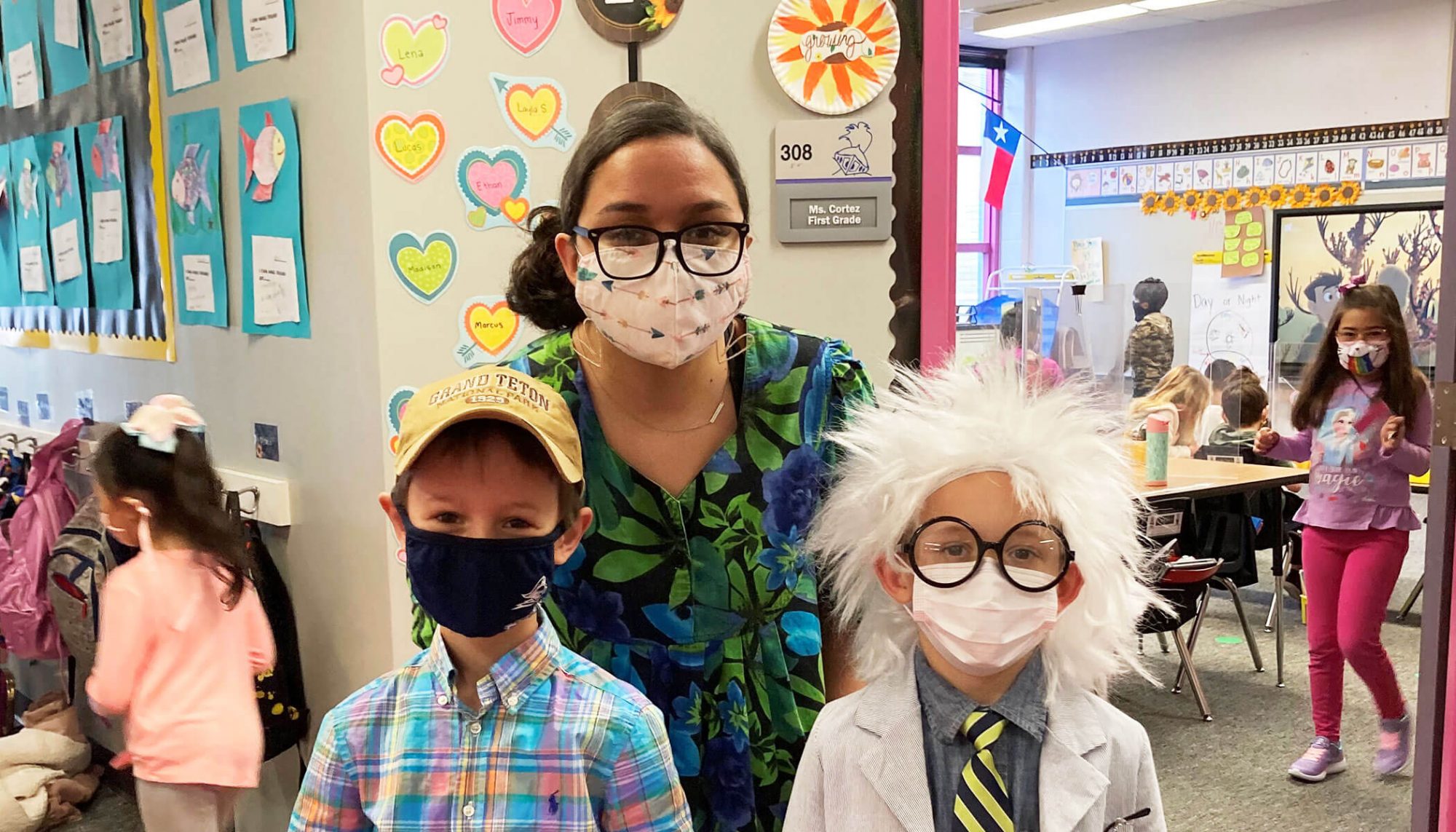May 24, 2021 · 6 min read
From Hurricane Harvey to COVID-19: How Nottingham Elementary Remains Resilient

The past year-and-a-half has been difficult — to say the least — for families and communities. For educators, in particular, supporting students’ academic success can be incredibly stressful amid a global pandemic and the effects of structural racism, trauma and more. These realities have led many teachers and administrators to feel as if they have to choose between prioritizing academic recovery and focusing on students’ mental and physical wellbeing.
However, research suggests that spending time improving mental wellness, reducing stress and increasing a sense of belonging in classrooms can help accelerate academic learning. When students have strong connections to school and feel seen, heard and valued as part of a community, they are capable of tremendous progress. Nottingham Elementary School in Houston, Texas, has put this research to the test in more than one tumultuous situation, investing significantly in community wellness before re-focusing on academics.
Prioritizing Teacher and Student Well-Being as a Tool for Learning
Harvey, a Category 4 hurricane, hit the Houston area on Aug. 26, 2017, about a week after school began in the Spring Branch Independent School District. Schools remained closed until Sept. 11 — nearly four weeks later. Despite the delay, Roy Moore, Nottingham Elementary’s principal, used two additional weeks to focus on trauma-informed practices for staff and students.
On the surface, the school lost six weeks of a 40-week school year. However, the results of Nottingham Elementary’s decision demonstrate that prioritizing the school community’s sense of belonging and well-being impacted overall academic success positively.
Nottingham students saw improvements in academic performance compared to years prior.
According to the results from the 2017-2018 State of Texas Assessments of Academic Readiness test, the percentage of students who met their grade level or above increased in reading, math and writing. The school achieved five new school distinctions, including:
- Academic Achievement in English Language Arts/Reading
- Academic Achievement in Mathematics
- Academic Achievement in Science
- Top 25 Percent: Comparative Academic Growth
- Top 25 Percent: Comparative Closing the Gaps
Speaking at a 2019 NBC Learn Event in Houston, Roy Moore reflected on the school’s strategy.
“We just took some time to really just reconnect,” he said. “ We wanted to move slow. It wasn’t really about academics; it was about connecting again. Making sure that our kids had a voice. Making sure that we were mindful of all of the things that they had experienced.”
More recently, we spoke with Becky Hagan, who became Nottingham’s principal in August 2020. After starting the role during the pandemic, Becky also decided to support both academic learning and well-being.
“You have to go slow, to go fast,” she says. “Nottingham wants to be a model for the rest of the district on what kinds of precautions we can put in place to help teachers, students, and parents feel more comfortable.”
Nottingham prioritized the needs of the students and its staff, which benefited the entire school community. Becky and her team worked to reduce teachers’ stress by limiting any extra burdens or worries they might face. The school equipped teachers with face shields and masks, adapted master schedules, and created pathways so students could socially distance themselves in hallways.
“The services that sometimes we think that just our children need, some of our staff members were needing those services, as well,” Becky says. “If you take good care of the big people in the building, they’ll take care of the little people in the building.”

How to Follow Nottingham Elementary’s Example
Based on research and Nottingham’s first-hand experience, academic communities enduring challenges should consider focusing on their members’ mental and physical health as tools for success in learning and development. Here are four steps school communities can take to foster resilience and well-being:
1. Make Sure Students Have a Voice
In every classroom at Nottingham, students and teachers gather for daily community circles to start or end the day.
“This time is precious to us and allows our students to connect with one another and with the teacher,” says Becky.
Students can express themselves in different ways during the community circles, including speaking about any given topic, writing on sticky notes, and exploring their feelings through art.
2. Be Intentional About Staff Appreciation
The team at Nottingham makes staff appreciation a priority. This appreciation is expressed creatively through handwritten notes to each staff member, a flexible work attire policy that keeps staff comfortable throughout the year, and providing breakfast and snacks. There are also structural policies in place, such as giving teachers time off for self-care or family matters.
“For our teachers, it’s truly about understanding their personal needs,” says Becky.
3. Practice Vulnerability
When she first started her role at Nottingham, Becky knew that she would have to be vulnerable to build relationships with her staff.
“I was transparent with my staff during the pandemic,” she says. “I shared with them what my family was going through, and I reassured them we were going to make it through together.”
Becky also makes sure staff have a trusted space to talk openly about past traumas, challenges and what they need to feel safe and supported.
“We had honest conversations about their fears [related to school reopenings during the pandemic],” she says, “ and then brainstormed ways to make them feel more comfortable with the precautions we have in place.”
4. Take Time To Connect Again
“Our staff has done an outstanding job of pulling together to make sure every day we bring the fun and laughter into our classrooms,” says Becky.
That means engaging with the school community in celebratory activities in safe ways. One example is a “Boo-thru” Halloween party where parents and staff decorated their cars with different picture book themes. Families were able to drive through and get a bag of treats as they left.
“We are a family, and all support one another,” says Becky.
Above all, it’s important to remember that non-academic development and academic success go hand-in-hand.
“You make the most progress if you’re vulnerable,” Becky says. “[If] you’re very transparent with the type of support that you need, and then you’re also very proactive in thinking … what things have to get done for the sake of the kids so that people, staff members and students, feel safe.”





